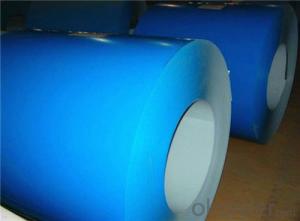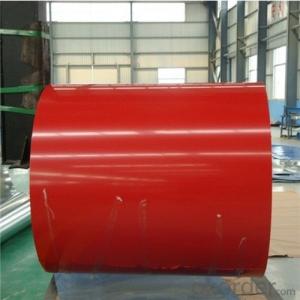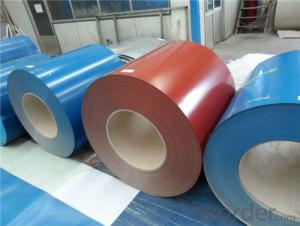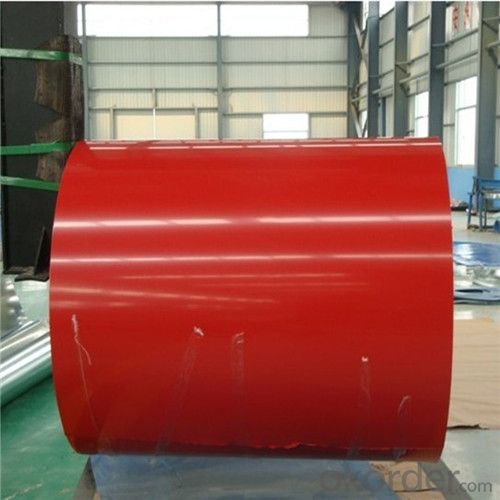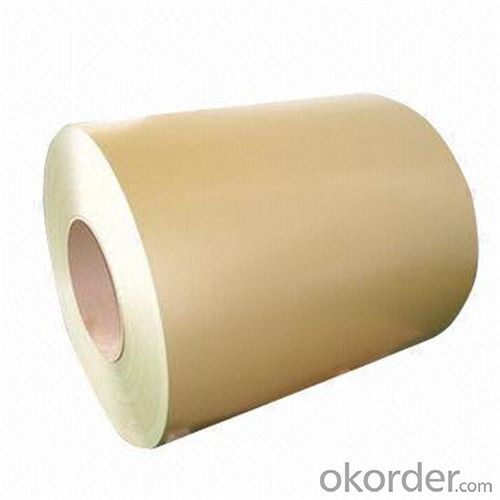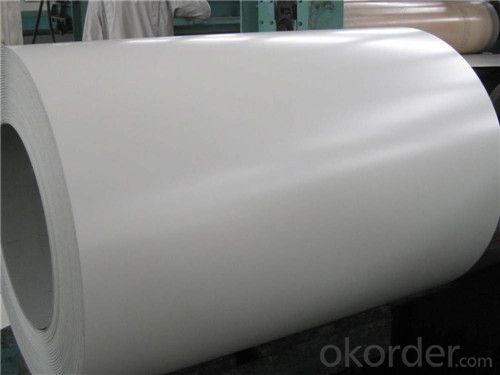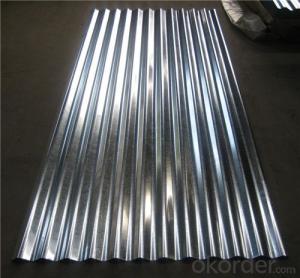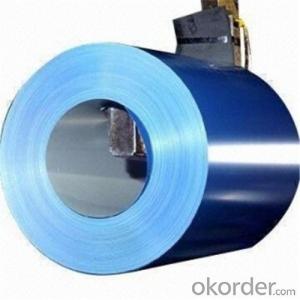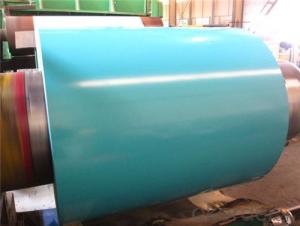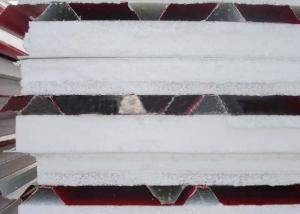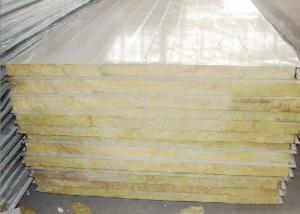600MM Z75 Rolled Steel Coil for Sandwich Panel
- Loading Port:
- Tianjin
- Payment Terms:
- TT OR LC
- Min Order Qty:
- 45 m.t.
- Supply Capability:
- 30000 m.t./month
OKorder Service Pledge
OKorder Financial Service
You Might Also Like
Structure of 600MM Z75 Rolled Steel Coil for Sandwich Panel
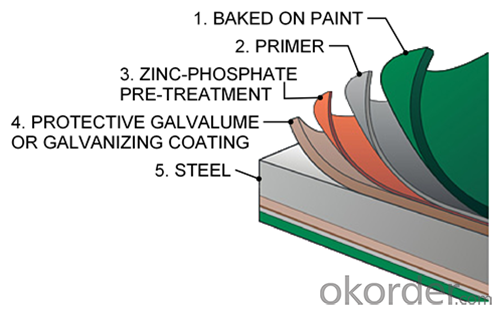
Description of 600MM Z75 Rolled Steel Coil for Sandwich Panel
600MM Z75 Rolled Steel Coil for Sandwich Panel is a kind of color steel. With the cold rolled steel or galvanized steel of different strength and hardness and thickness asrequested, it is manufactured through applying Zinc coating on both faces by hot dipped processing. Of the coating, Al accounts for about 55%, Si 1.6%, and Zn is the remaining. And its surface has bright silver color and regular embossed-like figure, which are highly decorative with long life.
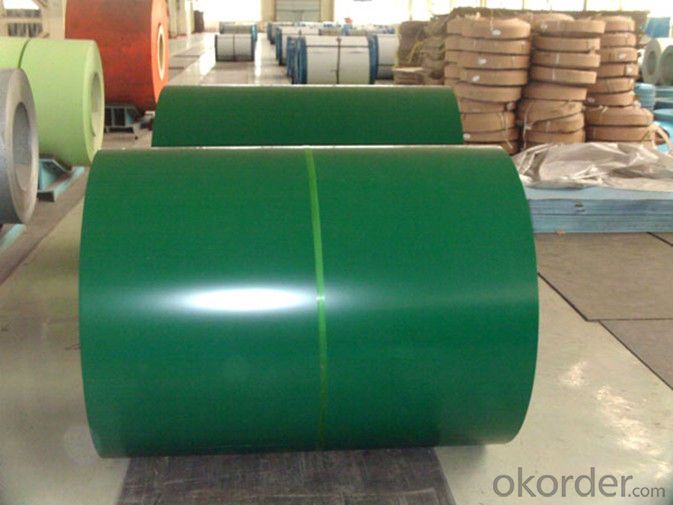
Main Feature of 600MM Z75 Rolled Steel Coil for Sandwich Panel
1.Corrosion resistance: It mainly depends on the aluminum protection. When the zinc being worn, the aluminum will form a dense layer of aluminum oxide, resist corrosion material to prevent further corrosion inside.
2. Heat resistance: Aluminum zinc alloy steel sheet has excellent heat resistance, can withstand high temperatures over 300 centigrade, and is similar with aluminized steel high temperature oxidation resistance. It often used in chimney pipes, ovens, fluorescent lighting device and the device cover.
3. Heat reflective: Galvanized steel plate heat-reflective high rate is twice as galvanized steel, often used to make insulation materials.
4. Economy: Because density of 55% AL-Zn is smaller than the density of Zn, so in the same weight and thickness of Galvanized zinc layer, aluminum-zinc steel plate is larger area more than 3% of galvanized steel sheet.
Applications of 600MM Z75 Rolled Steel Coil for Sandwich Panel
1. Construction and building: roofing; ventilating duct; handrail; partition panel;etc.
2. Electric appliance: refrigerator; washing machine; refrigerator; DVD;etc.
3.Transportation: oil tank; gas tank;pentane tank; road sign; etc.
4.Agriculture:barn other decking; etc.
5.Others:vending machine; game machine; etc.
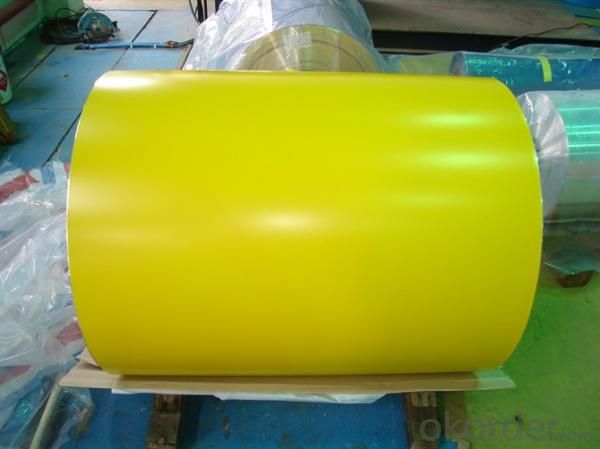
Specifications of 600MM Z75 Rolled Steel Coil for Sandwich Panel
Product | 600MM Z75 Rolled Steel Coil for Sandwich Panel |
Material Grade | SGCC / SGCH / DX51D+AZ, etc |
Thickness | 0.5-3.0mm |
Width | 500-1500mm |
Tolerance | Thickness: +/-0.02mm , Width:+/-2mm |
Zinc-coating | Z40-150g/m2 |
Technique | Raw material: Hot rolled steel coil --> Cold rolled_>hot dipped galvalume |
Surface | Dried, Chromated, Unoiled, slight oiled |
Spangle | Regular spangle , small spangle, zero spangle,mini spangle |
ID | 508MM or 610MM |
Coil weight | 1-25MT MAX |
Export package | Cardboard inner sleeves, Waterproof paper, galvanized steel covered and steel strip packed |
FAQ of 600MM Z75 Rolled Steel Coil for Sandwich Panel
We have organized several common questions for our clients,may help you sincerely:
1. What is the minimum order quantity ?
Our MOQ is 50mt for each size. And we will consider to give more discount if you make big order like 1000 tons and more. Further more, the more appropriate payment term your offer the better price we can provide.
2. How long can we receive the product after purchase?
Our delivery time is around 30 day after order confirmed.
3. How to make sure the quality of the order?
We have our own quality control team with over 40 QC every link from raw material to final product we have strict quality test.
4. What is your payment?
We accept L/C at sight, T/T, L/C 90 days, 60 days, 30 days acceptable
- Q: What are the different methods of cutting steel coils?
- There are several methods of cutting steel coils, including shearing, slitting, laser cutting, and saw cutting.
- Q: How are steel coils formed into specific shapes?
- Steel coils are formed into specific shapes through a process known as coil slitting and coil forming. Coil slitting involves unwinding a large steel coil and passing it through a series of rotating circular blades, which cut the coil into narrower strips of the desired width. These strips are then rewound into smaller coils, known as slit coils. Once the steel has been slit into narrower strips, it can undergo coil forming to achieve specific shapes. Coil forming typically involves a combination of processes such as roll forming, stamping, bending, or pressing. Roll forming is a common method where the steel strip is passed through a series of rollers that gradually shape it into the desired profile. Each roller is designed to gradually bend the strip in a specific way, ultimately creating the desired shape. Stamping is another method used in coil forming, where the steel strip is fed through a machine that uses a die and a press to cut or shape the metal into the desired form. This process is typically used for more intricate shapes or when high precision is required. Bending and pressing are also common techniques used to form steel coils into specific shapes. Bending involves using a machine or tool to apply force and manipulate the steel strip into the desired curvature or angle. Pressing, on the other hand, involves using a hydraulic or mechanical press to exert pressure on the steel strip, causing it to be shaped according to the design of the mold or die. Overall, the formation of steel coils into specific shapes involves a combination of coil slitting and coil forming techniques. These processes, such as roll forming, stamping, bending, or pressing, allow manufacturers to transform steel coils into a wide range of shapes and profiles, catering to various applications in industries such as construction, automotive, and manufacturing.
- Q: What are the different types of steel coil loading and unloading methods used during processing?
- There are several different methods used for loading and unloading steel coils during processing. Some common methods include overhead crane lifting, forklift transportation, coil cars, and coil transfer cars. Each method has its own advantages and is chosen based on factors such as the size and weight of the coils, the available equipment, and the layout of the facility.
- Q: Can steel coils be coated with self-cleaning materials?
- Yes, steel coils can be coated with self-cleaning materials.
- Q: I've been looking for lots of info on this steel. Cold Steel uses it now in their knives replacing the AUS-8 steel. I was hoping somebody had a knife with this steel who could give me some real first hand knowledge not just numbers. Thanks!
- Before I answer I must let you know that I have been a knife collector for 17 years, and have a great assortment of specialty and antique folding knives. As for your question, I wouldn't worry too much about it. The first answerer is very knowledgeable in this category. But in the real world, the steel chemistry of folding knives will never be as important as that of fixed blades or kitchen knives. The fact that manufacturures go through great lengths to advertise their superior steel is just for sales and bragging rights. When it comes down to it, a pocketknife might be useful, but it is never the best tool for the job. It is a compomised design from the beginning. If you need to cut a steak, a steak knife will do. A box cutter works best on cardboard. A razor works best for shaving, wire cutters best for cutting wire, an axe for chopping wood...I could go on. A pocket knife is never going to perform better than the real thing ( although I do prefer the can openers on Swiss army knives than real can openers). As for self defense, minus the concealability factor, a folding knife sucks compared to a fixed blade. But if you were to pull one out during an extreme circumstance, I doubt anyone is going to be effected by the Rockwell hardness.
- Q: Ok, I need two negative facts about steel wheels and two for aluminum wheels. im designing a wheel for a project in design and draw for production class. Also if you find a web site that you got the info from plz refrence it i need to write down the source of the info, but if you can't its ok. Thanks
- Negative facts for steel wheels: (1) Not as many style choices as aluminum. (2) Rust easily even when painted or powder coated, due to rock chips. (3) Heaver than aluminum, as far as fuel economy. Negative facts for aluminum wheels: (1) More sensitive to proper torquing of lug nuts. IE torque must be checked more often. (2) Susceptible to impact damage from road hazards much more than steel. (3) Need constant attention to prevent oxidation. Are these what you are looking for? I hope so. Wingman
- Q: Can steel coils be coated with PVC?
- Yes, steel coils can be coated with PVC. PVC coating provides a protective layer that helps prevent corrosion and enhances the durability of steel coils.
- Q: What is the process for uncoiling and recoiling steel coils?
- The process for uncoiling and recoiling steel coils involves several steps to ensure the safe and efficient handling of the coils. 1. Unloading: The steel coils are typically transported to the desired location using cranes or forklifts. They are carefully unloaded from the transportation vehicle and placed in a designated area. 2. Inspection: Before uncoiling, it is crucial to inspect the steel coils for any damage or defects. This step ensures that only quality coils are processed further. 3. Securing: Once inspected, the steel coils are secured to prevent any movement during the uncoiling process. This is done by using clamps or straps to hold the coils firmly in place. 4. Uncoiling: Uncoiling involves the gradual unwinding of the steel coil. This can be done manually or using specialized machinery such as uncoilers or decoilers. The coil is typically fed through a series of rollers that help guide the unwinding process. 5. Straightening: In some cases, the steel coil may need to be straightened before further processing. This can be done using straightening machines that apply pressure to remove any bends or twists in the steel. 6. Cutting: If required, the uncoiled steel coil may be cut into smaller sections or sheets. This can be done using shearing machines or other cutting tools. The dimensions and size of the cuts depend on the specific requirements of the project. 7. Recoiling: Once the desired processing steps are completed, the steel coil can be recoiled. This involves rewinding the steel into a new coil shape. Recoiling can be done manually or using recoilers, which wind the steel evenly and tightly to maintain its integrity. 8. Packaging and storage: After recoiling, the steel coils are typically packaged and stored for further transportation or use. They may be wrapped in protective materials such as plastic or metal sheets to prevent corrosion or damage. Overall, the process for uncoiling and recoiling steel coils requires careful handling, inspection, and the use of specialized machinery. By following these steps, steel coils can be efficiently processed and prepared for various applications in industries such as construction, automotive, and manufacturing.
- Q: How are steel coils used in the production of metal buildings?
- Steel coils are an essential component in the production of metal buildings as they are used to create the structural framework and outer cladding. These coils are unrolled and cut into sheets, which are then shaped and formed into various building components such as beams, columns, and panels. The strength and durability of steel make it an ideal material for constructing metal buildings, ensuring they are capable of withstanding harsh weather conditions and providing long-lasting structures.
- Q: How are steel coils used in the production of metal doors and windows?
- Metal doors and windows rely on steel coils as a vital element for their production. These coils, usually crafted from high-grade steel, act as the primary raw material in the manufacturing process. To begin, the uncoiling process is crucial when utilizing steel coils. The coils are unwound and introduced into a machine called a roll former. This machine meticulously molds the steel into the desired shape for the door or window frame. Before entering the roll former, the steel is typically cut to the necessary length. Once the steel has been shaped, it undergoes a series of additional manufacturing processes. These processes may involve creating holes for hardware installation, bending the steel to form specific angles or curves, and welding different sections together to construct a complete frame. The steel coils provide the essential structural integrity and durability required for these processes. Furthermore, steel coils also play a critical role in enhancing the visual appeal of metal doors and windows. They can be coated with various finishes, such as galvanized or powder-coated, to protect against corrosion and enhance the overall appearance of the final product. These coatings not only add an extra layer of durability but also allow for customization to match different architectural styles and design preferences. In conclusion, steel coils serve as the foundational material in the production of metal doors and windows. They are shaped, cut, and processed to create the necessary components for these products. Additionally, steel coils can be coated to improve their durability and aesthetic appeal. Ultimately, these coils significantly contribute to the strength, durability, and overall quality of metal doors and windows.
Send your message to us
600MM Z75 Rolled Steel Coil for Sandwich Panel
- Loading Port:
- Tianjin
- Payment Terms:
- TT OR LC
- Min Order Qty:
- 45 m.t.
- Supply Capability:
- 30000 m.t./month
OKorder Service Pledge
OKorder Financial Service
Similar products
Hot products
Hot Searches
Related keywords
